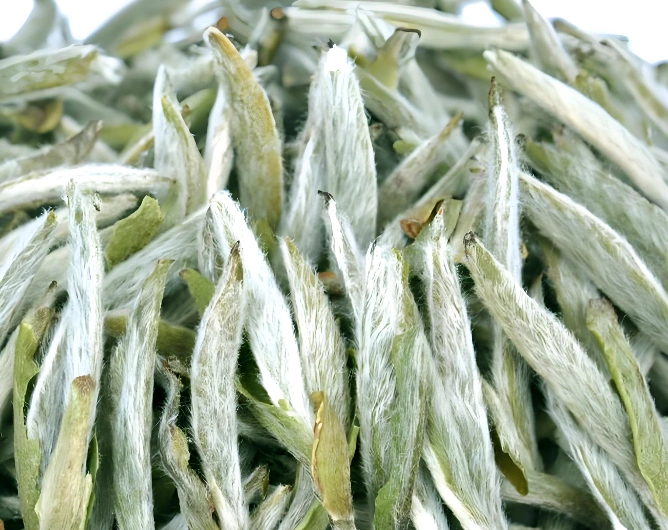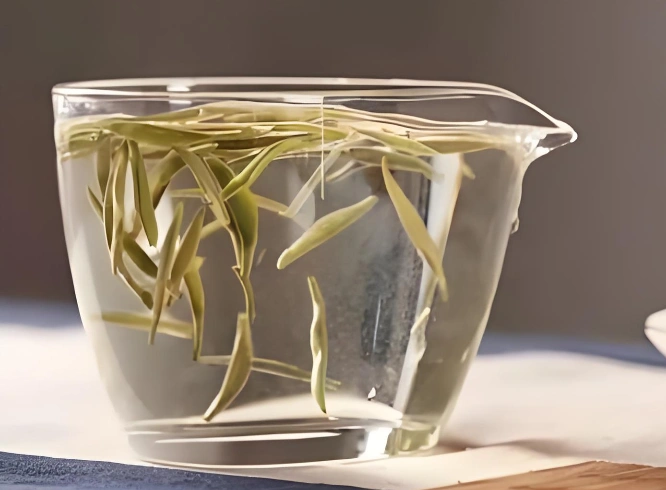Fujian white tea is a sensory odyssey through mist-shrouded mountains and centuries-old traditions. From the moment you cradle its pale-gold liquor, inhaling a bouquet of silken florals and honeyed undertones, you’re transported to the verdant hills of southeastern China.
In this article, you’ll explore what makes Fujian white tea so coveted—from its minimal-oxidation craft to the revered terroirs of Fuding and Zhenghe, the signature cultivars, nuanced flavor profiles, and calming health benefits. Prepare to awaken your senses and deepen your appreciation for one of the purest brews on Earth.
What Is Fujian White Tea?
At its core, Fujian white tea is defined by the gentlest of processes: freshly plucked buds and young leaves are withered, then dried with minimal oxidation. Unlike green or oolong teas, white tea skips rolling and heavy firing, preserving delicate catechins, amino acids, and aromatic oils. The result is a translucent, pale-gold infusion that balances sweetness, floral perfume, and a soft vegetal note. In China’s vast tea hierarchy, white tea represents purity—its restrained craft capturing the essence of the leaf more faithfully than any other style.

Key Growing Regions: Fuding & Zhenghe
Fuding White Tea
Nestled along the estuaries of the Min River, the Fuding region’s warm days and cool, misty nights create an ideal microclimate for white tea. Here, the famed “Da Bai” cultivar thrives, producing long, jade-tipped leaves flecked with silvery down. Fuding white tea is celebrated for its brisk sweetness and ethereal floral notes, reflecting the region’s rich, loamy soils and temperate humidity.
Zhenghe White Tea
Further inland and perched at higher elevations, Zhenghe offers a contrasting landscape of granite ridges and crisp mountain air. The altitude stress imparts a more concentrated leaf structure, yielding a deeper-hued liquor with pronounced minerality and chestnut nuances. Zhenghe white tea stands out for its robust body and subtle earthiness, a testament to its rugged terroir.
Major Fujian White Tea Varieties
- Silver Needle (Baihao Yinzhen)
- Crafted exclusively from unopened buds, Silver Needle epitomizes white tea’s purity. Its almost colorless brew offers a creamy mouthfeel with notes of fresh-cut grass and melon.
- White Peony (Bai Mudan)
- Combining one bud with two to three leaves, White Peony bridges delicacy and depth. Expect honeyed sweetness underlined by soft floral undertones—an ideal introduction to white tea’s layered elegance.
- Shou Mei
- Harvested later in the season, Shou Mei features larger leaves and a deeper infusion. Its flavor leans toward ripe fruit and chestnut, delivering a comforting, full-bodied experience.
- Gong Mei (Tribute Eyebrow)
- A refined variant of Shou Mei, Gong Mei presents similar full-leaf character with a slightly sweeter finish—perfect for afternoon sipping.
Together, these premium white tea varieties showcase Fujian’s horticultural heritage and the nuanced artistry of minimal processing.

Traditional Processing & Loose Leaf Form
Withering & Drying
Immediately after hand-picking, leaves are spread thinly to wither under gentle airflow. This stage softens cell walls and concentrates natural sugars. A subsequent low-heat drying—either sun-shade or controlled oven—removes moisture without triggering oxidation, locking in the leaf’s fragile aromatic compounds.
Minimal Oxidation
True white tea halts oxidation below 5%, safeguarding polyphenols and L-theanine—the compounds behind white tea health benefits such as antioxidant support and mental calm. This light touch on the leaves preserves their natural hue and nuanced flavor.
Loose Leaf Characteristics
High-quality Fujian white tea appears as wiry, silvery-tipped leaves. Store it in airtight, opaque containers away from heat, light, and moisture to maintain its pristine integrity and aromatic potency.
Flavor Profile & Brewing Guide
Tasting Notes
- First Infusion: Delicate honeydew sweetness with a whisper of cool minerality.
- Mid Infusions: Floral echoes—lily and jasmine—emerge, accompanied by a silky, almost creamy texture.
- Later Steeps: Nutty or fruity undertones linger, rewarding patience and multiple infusions.
Brewing Recommendations
- Water Temperature: 75–85 °C (167–185 °F)
- Tea-to-Water Ratio: 3 g per 120 ml
- Steeping Time: 2–4 minutes for the first brew; increase by 30 seconds for each subsequent infusion
- Multiple Infusions: Expect 4–6 steeps of evolving complexity
By adhering to these parameters, you coax out white tea’s full spectrum of sweetness, floral perfume, and gentle body—without bitterness.

🔗 To learn more about how to make tea, check out Tanbiwencha’s YouTube video explaining how to make tea.
Health Benefits of White Tea
White tea health benefits extend far beyond its exquisite taste:
- Antioxidant Power: High polyphenol content combats free radicals, supporting skin health and cellular vitality.
- Calming Amino Acids: L-theanine promotes focused relaxation, making each cup a peaceful pause in your day.
- Gentle Detox: Mild diuretic effects aid toxin elimination and promote healthy hydration.
Emerging research also suggests potential support for blood sugar regulation and immune function—underscoring white tea’s status as both a sensory delight and a wellness ally.
Buying & Storage Recommendations
Selecting Quality Fujian White Tea
- Dry Leaf Appearance: Uniform silvery fuzz and intact leaf shape.
- Aroma: A fresh, hay-like scent indicates recent production.
- Reputable Sources: Choose specialty tea vendors offering whole-leaf, loose tea rather than bagged blends that may contain fannings.
Storage Tips
Keep your tea in an airtight tin in a cool, dark place. Avoid refrigerators or areas with strong odors; white tea’s delicate leaves can absorb unwanted moisture and scents, compromising flavor.
FAQs About Fujian White Tea
Q: How can I tell Fuding white tea from Zhenghe white tea?
A: Fuding’s brews lean floral and bright, reflecting lower elevation and richer soils, while Zhenghe’s teas carry deeper minerality and a fuller body from high-altitude growth.
Q: How many times can I re-steep white tea?
A: With proper technique, you can enjoy 4–6 rewarding infusions—each revealing new flavor facets.
Q: What’s the ideal storage environment?
A: An opaque, airtight container stored at room temperature, away from light, heat, and strong odors, preserves freshness for months.
Conclusion & Call to Action
From Fuding’s misty valleys to Zhenghe’s lofty peaks, Fujian white tea encapsulates centuries of horticultural expertise and minimal-processing artistry. Whether you’re drawn to the silken purity of Silver Needle or the honeyed warmth of White Peony, each cup offers a taste of calm elegance and wellness. Ready to elevate your tea ritual? Seek out premium Fujian white tea today, master the gentle brew, and share your journey—one exquisite cup at a time.



